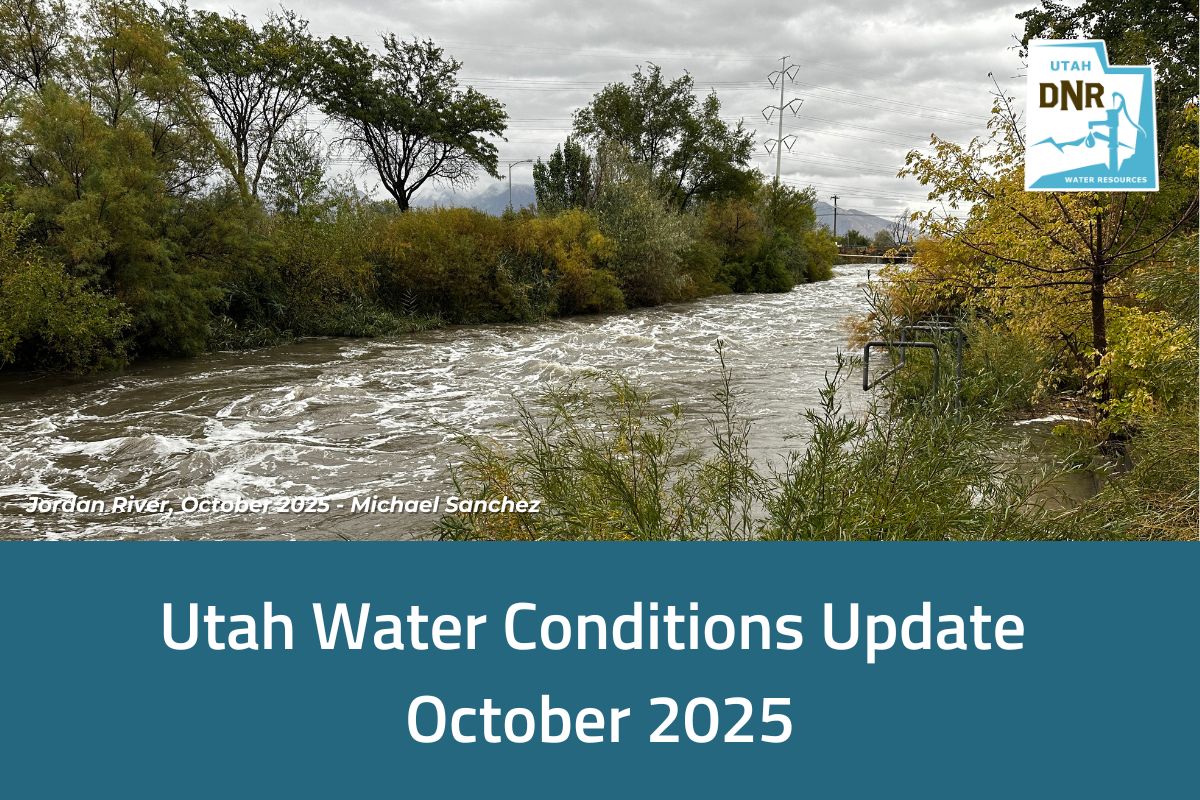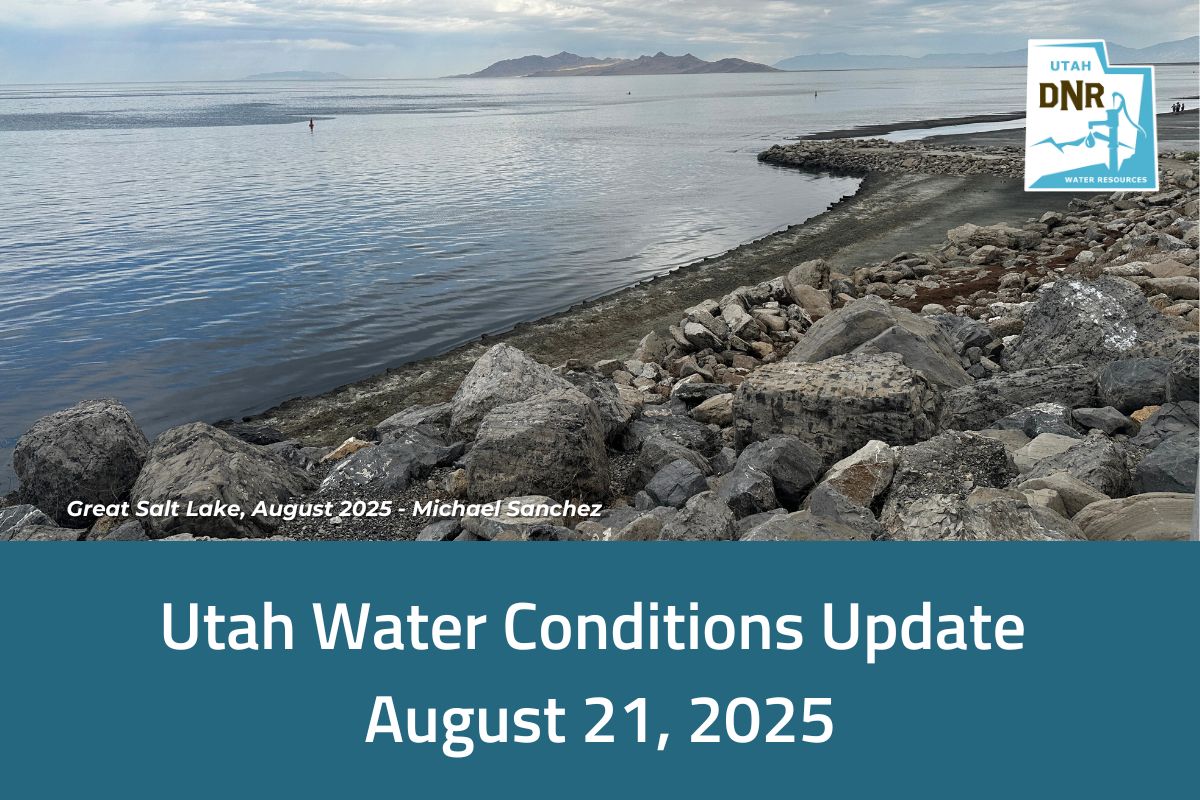SALT LAKE CITY (October 21, 2025) – The beginning of our Water Year, which began on Oct. 1, has delivered outstanding early-season precipitation. This historic moisture has profoundly improved water conditions and significantly boosted the outlook for our region’s water supply.
(more…)Public input sought for the new Unified Water Infrastructure Plan
Published 09-23-25
SALT LAKE CITY (Sept. 23, 2025) – The Water Development Coordinating Council will host four public meetings throughout the state in October to gather public input on the new Unified Water Infrastructure Plan (UWIP). These meetings are an opportunity for Utahns to learn more about the state’s new approach to funding water projects and to share their perspectives on Utah’s water future.
(more…)Utah Water Conditions Update August 2025
Published 08-21-25
SALT LAKE CITY (August 21, 2025) – Utah’s reservoir levels are showing a drastic decline. Since June 1, the state has drawn down reservoirs at a rate more than double the normal rate. This is due to increased demand, lower-than-normal spring runoff and an extremely dry summer.
(more…)Water Conditions Update – July 22, 2025
Published 07-22-25
SALT LAKE CITY (July 22, 2025) – 100% of the state is in moderate to severe drought. On average, our reservoirs have dropped around 10% between June 1 and July 1. Typically, reservoirs drop around 2% during the same period. This is due to increased demand and an inefficient spring runoff earlier this year.
(more…)Utah Water Conditions Update May 2025
Published 05-29-25
SALT LAKE CITY (May 29, 2025) – As we head into hotter months, we expect increased demand for water. With the state’s subpar snowpack, which feeds our reservoirs, continued water conservation will remain a top priority for the state. State agencies will continue to monitor conditions and assist communities where needed. The governor issued a drought declaration on April 24, which has now expired.
(more…)Utah Water Conditions Update April 2025
Published 04-18-25
Utah Water Conditions Update February 2025
Published 02-18-25
SALT LAKE CITY (Feb. 18, 2025) – Utah’s snowpack has raised concerns among water managers. The state’s snowpack sits at 93% of normal, with two southern Utah basins recording less than 50% of normal snow water equivalent (SWE). Extreme drought has reappeared in southwestern Utah for the first time since March 2023.
(more…)What is SWE and why should you care?
Published 12-18-24
SALT LAKE CITY (Dec. 18, 2024) – Winter brings snow that blankets mountains, delights skiers and transforms the landscape into a frosty wonderland. Snowman building and skiing aside, we get about 95% of our water from snowpack. Enter SWE, or snow water equivalent — the superhero of snow measurements!
(more…)Utah Water Conditions Update December 2024
Published 12-17-24
SALT LAKE CITY (Dec. 17, 2024) – Current snowpack is developing in a “stair-step” pattern, with storm-driven increases followed by plateaus. Statewide, our snowpack is 81% of normal. Despite this early variability, hopes remain for a near-normal snowpack accumulation by spring. Utah’s snowpack typically peaks in April.
(more…)Utah Division of Water Resources Wins 2024 WaterSense® Excellence Award
Published 09-30-24
Washington, D.C. (09/30/24)—The U.S. Environmental Protection Agency (EPA) recognized the Utah Division of Water Resources with a WaterSense Excellence Award for promoting the WaterSense brand. WaterSense honored its Sustained Excellence, Partner of the Year, and Excellence Award winners during the WaterSmart Innovations (WSI) Conference. The division was one of 22 Excellence Award winners.
(more…)









